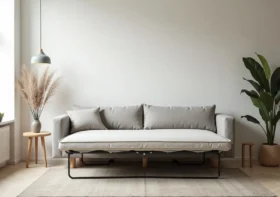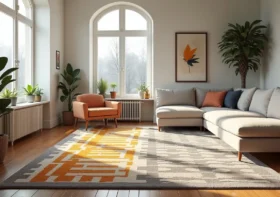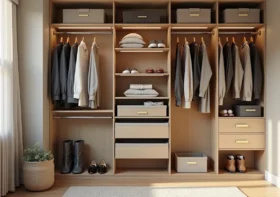Walls That Speak: A New Language in Interior Design

Walls used to be bland surfaces or empty frames for some decor, but in modern interior design, they’re becoming the main character!
With curated art from Paints Lab, creatives can shape the mood and feel of a space early in the process—long before the first piece of furniture is in place
It’s becoming popular for interior design to now be a lot more focused on art instead of sticking to the ordinary boundaries of interior design. People are turning everyday rooms into stories you can step into—spaces shaped by mood, color, and artistic expression.
Wall art is inspiring people to add meaning, rhythm, and structure to their spaces with bold, expressive pieces.
Between abstract art and street style art, these pieces aren’t just decorating a room; they’re defining it.
Contents
Using Art as a Building Block
Art has always been used in interior design, but the way it’s being used is what’s changing.
It used to be the final touch once a room is finished, but now, it’s the starting point. It’s the building block that shapes how the rest of the room will be designed.
Especially in very big or open-plan homes, big artworks can balance the room, guide how people move, and create a sense of flow.
For example, an energetic piece of abstract living room wall art is gorgeous, but its color contrasts, bold lines, and natural shapes can effortlessly draw attention and influence everything else in the room, like where you put furniture and lighting.
Many begin by selecting a piece of art to serve as the centerpiece of a room, then build the rest of the space around it—choosing textures, shapes, and color palettes that enhance and complement the artwork’s style.
Art used to be an accessory, and now it’s architecture! It’s not just something you hang on the wall anymore, it sets the tone for the space around it.
Unleashing the Graphic Energy of Street-Inspired Design
Abstract art gives a room a mood and a feeling, but street art gives the room a voice.
Graffiti and urban art are known as symbols of rebellion, but that style of art is making its way indoors to add context, culture, and personality to dormant spaces.
People are attracted to graffiti art posters because of their rawness and authenticity. They use visual language to express multiple messages and emotions with just one glance.
When they’re added to something like a living room, a studio, or even an office, they become both art and a message.
By incorporating genuine, expressive art, people are creating rooms that feel lived-in and full of life.
Graffiti-inspired art adds a certain gritty elegance that generations who value meaning as much as beauty are drawn to.
Seeing Color Through Art
Color isn’t just a background thing anymore. It’s a powerful way to give a room a mood, an identity, and visual balance.
One of the most captivating ways to play with color in a space is through the artwork you choose. Instead of relying on paint chips, people are now drawing inspiration from central art pieces to define everything—from decorative walls to upholstery.
There are collections that blend graffiti and abstract styles, giving people the opportunity to draw inspiration from a wide range of art—whether it’s the bold vibrancy of street art or the subtle color transitions of minimalist pieces.
This method of design streamlines the process but also deepens it. When the color of a wall comes directly from a piece of art, everything feels more put together and intentional.
It lets people experiment with color in a playful way, turning the design process into an opportunity for both practicality and personal expression.
Connecting Artistic Vision with Physical Space
In today’s design landscape, creativity thrives through thoughtful planning—empowering people to explore ideas, test combinations, and shape spaces with intention before making permanent changes.
A major change in modern design is how smoothly digital concepts can be brought to life in physical spaces.
With access to curated art collections, people can easily experiment with different designs and explore creative possibilities. different layouts and make changes to lighting and finishes to see how everything works together.
For example, one can pair a striking abstract piece with textured wall panels or unique lighting to create depth and mood—without making any permanent changes.
This type of workflow empowers both the creator and the client, allowing ideas to be shared and visualized instantly—without the need to commit to the design right away.
Once the artwork sets the mood, the rest of the design falls into place naturally.
Design With Feeling
Minimalism was a thing for a while, but interior design that feels more alive and human is making a comeback.
Clients today want spaces that spark emotion and tell a story that feels like an extension of who they are. Nothing achieves that goal better than art.
Wall art is especially good at giving a room an emotion. Think about how a soothing abstract painting can create a sense of calm in a bedroom, or how an edgy graffiti piece can inspire creativity in a home office.
The right piece of art doesn’t just add beauty to a room, it affects how people feel in that space.
Homeowners and creatives are now thinking about the feeling of a room early in the process—focusing on mood, color, and atmosphere to guide their vision long before any construction or styling begins.
This shift in design shows that there is a growing awareness around the fact that what we see shapes how we feel. The goal is not just to create a nice-looking room anymore, it’s all about creating a space that resonates.
From Backdrop to Centerpiece: The Power of Walls
Interior design is changing, and walls are becoming more than just flat surfaces. They are being layered with meaning, color, texture, and a story.
They are not just painted, they are curated. And they’re not just seen, they’re felt.
It doesn’t matter if your style is the chaotic kind of beauty of graffiti or the thoughtful elegance of abstract art, walls are definitely having their moment and can be the centerpiece of any design style.
Walls have the ability to become an immersive and dynamic part of the room that guides every other feature in the room.
The line between art and architecture is still blurry, but one thing is clear: the wall is not just a backdrop anymore. It’s a statement!
And it’s telling a powerful, personal story—one that begins with a single, well-chosen piece of art.



